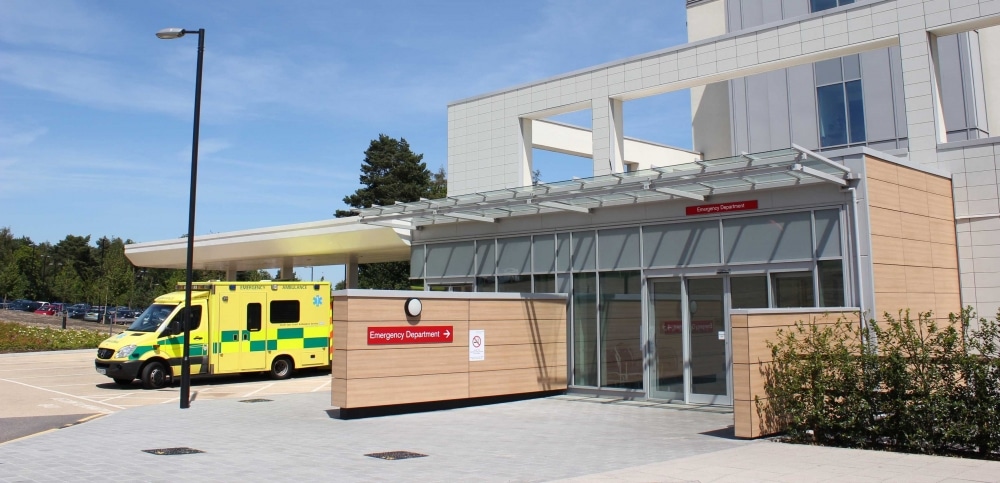Rising numbers of people visiting the Accident and Emergency (A&E) department at Tunbridge Wells Hospital this summer means thousands are having to wait hours to be treated.
July was among the busiest months on record for Maidstone and Tunbridge Wells NHS Trust (MTW) which runs the A&E units in Pembury and Maidstone.
Figures by NHS England show that 19,931 people came through the doors of its A&Es last month – the highest numbers seen this year.
Of these, 3,205 people (16 per cent) had to wait for more than four hours to be seen.
Just 84 per cent of people were seen in less time, despite the government target requiring that 95 per cent of A&E patients should be admitted, transferred or discharged within four hours.
The figures are a rise on June’s waiting times, when 86 per cent of the 17,235 people that visited A&E were seen within the target time with 2,484 people left waiting for four hours or more.
‘Attendances are now 20 per cent higher than the numbers seen before the pandemic’
While just 17 people were left waiting for 12 hours or longer in July, the four-hour wait times have increased to levels much higher than pre-pandemic levels.
Back in July 2019, before the Covid-19 crisis, MTW saw 17,769 A&E patients in that month and around 89 per cent were seen within four hours, with just 1,218 patients waiting longer.
Nationally, however, MTW is doing better than many hospital trusts as A&E departments across England saw their worst month for performance in July.

A record 29,317 people had to wait more than 12 hours in A&E departments in England last month. This is up 33 per cent from 22,034 the previous month and is the highest for any calendar month in records going back to August 2010.
And a total of just 71 per cent of patients in England were seen within four hours of arriving at A&E in July – the worst performance on record and well below the 95 per cent operational standard.
July, which included a heatwave that caused major disruption to travel as well as fires around the country, saw NHS staff across the country deal with more than 85,000 emergency ambulance callouts, NHS England said.
That was the highest number since records began and almost two-thirds higher than the 51,771 in July 2020, it added.
Nobody at MTW was available to comment.
Attendances
A spokesman for MTW told the Times that attendances were up 20 per cent. He added: “Our commitment is to see patients as quickly as possible in our Emergency Departments. “Attendances are now 20 per cent higher than the numbers seen before the pandemic and while this has led to an increase in waiting times for some patients, we remain the best performing trust across the region and in the top 10 in the country.
“To help reduce waiting times, we continue to invest in both staff and facilities and recently opened a new Children’s Emergency Department at Tunbridge Wells Hospital which provides a modern purpose-built area for our younger patients to receive care. We are also developing our Same day Emergency Care (SDEC) service which sits alongside ED and enables us to provide more patients with emergency care as quickly as possible.”
…And general waiting lists are on the rise too
The number of patients waiting for treatments such as knee and hip operations at MTW is also on the rise.
Last month, the Times reported how waiting lists for non-emergency treatments such as general surgery had stopped growing after seeing month on month increases since the beginning of the Covid-19 crisis.
The figures showed that 40,679 were awaiting treatment at MTW in May, which was a rise of just 43 patients from 40,636 in April.
However, NHS figures released last week show that the waiting list had risen to 41,162 in June.
The departments with the longest waiting lists at MTW are for ophthalmology (6,659), gynaecology (5,113) and general surgery (5,074).
The figures come amid a backdrop of a new record high of people in England waiting to start routine hospital treatment, with 6.7 million on the waiting list at the end of June.
This was up from 6.6 million in May and was the highest number since records began in August 2007.








